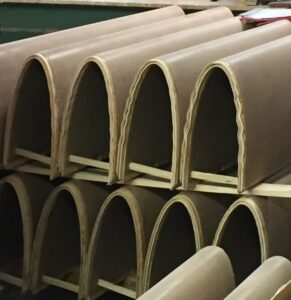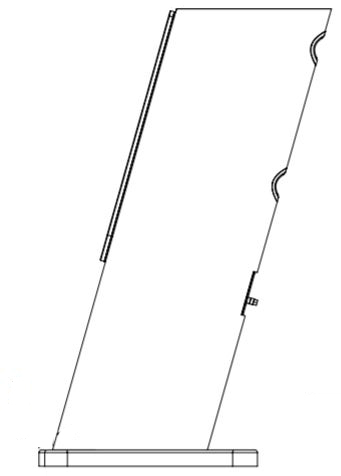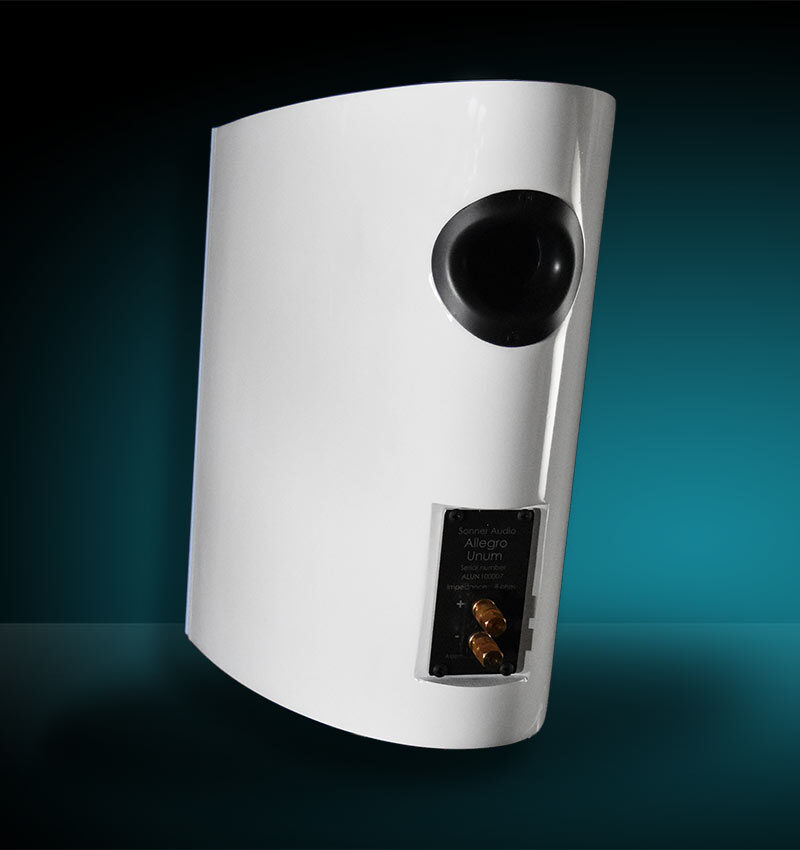Enclosure Concept
Low Energy Storage concept (LCM) is a system that allows a loudspeaker cabinet, speaker driver and crossover components to release both electrical and mechanical energy in an instant without storing the energy in the surrounding material.
Enclosure Design
We design our cabinet using this concept because it is the closest way to produce a live sound. We implemented this concept in our speaker cabinets by a proprietary process of molding layers of selected wood to make a monocoque (ala formula 1 race cars) curve cabinet shell.
This single curve shell from top to bottom creates an extremely rigid cabinet construction

The non-parallel shape of curved shell
significantly reduces disruptive internal
standing waves and unwanted
resonance.
As a result, the sound will be produced faithfully to the original signal without adding cabinet coloration or having the cabinet absorb the sound.
We chose to engineer layers of selected wood for our cabinet because of its natural acoustic characteristics.
We have taken the enclosure design to the next level by applying a time alignment method.
The speaker cabinet is tilting/leaning back on an angle with an acoustics plate attached to the front baffle.
This design form follows function to directly manage vertical and horizontal sound dispersion and to control and maintain time and phase coherent.
Audience will hear a realistic soundstage with focused sound and musician image.
Lastly, this time aligned cabinet frees up electrical time domain compensation in the crossover. Because of limited crossover compensation, music becomes more engaging.
To comply with our speaker drivers’ technical characteristic, Sonner applies ported cabinet design.


The cabinet utilizes our proprietary design of the port’s outer surface.
It fits perfectly on the outer radius of our curve cabinet shell.
As supposed to mount a port on a wide flat surface panel, Sonner's port geometry allows air to flow seamlessly from the speaker because there are no secondary sound wave reflections. This makes a clean sound and unrestricted wide and deep soundstage.
Because of the small radius at the back of the curved cabinet shell sound waves actively reflect from the wall behind the speaker.
This will also have the benefit of less cabinet surface area which can create troubling resonant or standing acoustic waves.
Finally, this will make speaker placement manageable closer to the wall.
To realize such an elegant and complex cabinet design, we utilized 3D CAD software and fabricate the cabinet enclosure using top line 3 and 5 Axis CNC manufacturing equipment.

